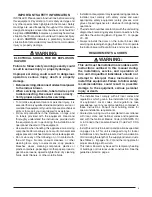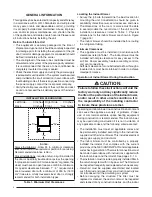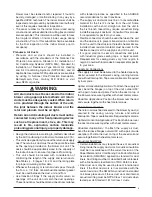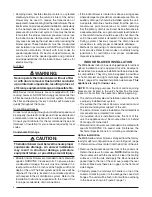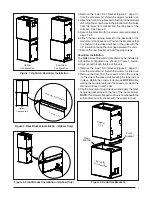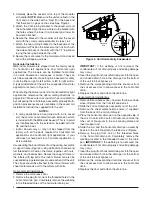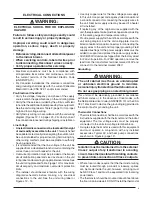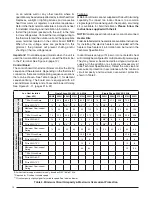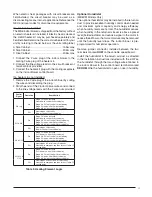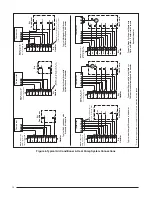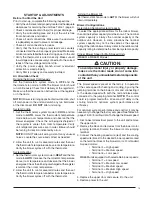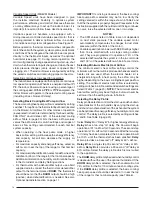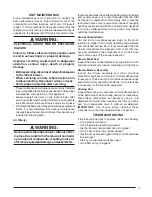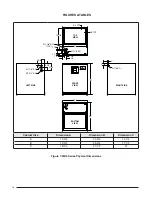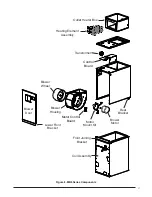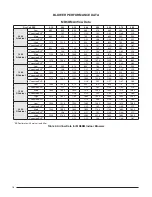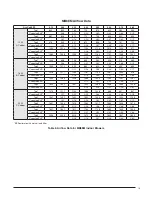
5
blower must be cleaned and/or repaired if found to
be dirty, damaged, or malfunctioning in any way by a
qualifi ed HVAC technician. The indoor blower shall be
inspected and approved by applicable local authority
even if this requires redundant inspections.
• The serial number for the indoor blower used during
construction must be submitted in writing (fax and email
also acceptable). This information will be used to track
the long-term affects of indoor blower usage during
construction. Proof of this submittal shall be available
for the fi nal inspection of the indoor blower prior to
occupancy.
with standard practice as specifi ed in the ASHRAE
recommendations for duct transitions.
• The supply air ductwork must be of noncombustible
material for the fi rst 24 inches from the unit. Some
installations with a short, straight run from the unit to
the fi rst branch takeoff may require acoustical lining
inside the supply air ductwork. Consult with local codes
for requirements specifi c to your area.
• Flexible connectors should be used between the unit
and the ductwork to prevent transmission of vibration
from the unit to the structure. If electric heater kits are
installed, heat resistant material must be used for the
fl exible connector at the supply air end of the unit.
• It is good practice to seal all connections and joints
with industrial grade sealing tape or liquid sealant.
Requirements for sealing ducts vary from region to
region. Consult with local codes for requirements specifi c
to your area.
Supply Air Connections
The supply air must be delivered to the heated space by
duct(s) secured to the blower’s casing, running full size
and without interruption. Tape or seal all seams if required
by local code.
Upfl ow & Horizontal Applications:
To attach the supply air
duct, bend the fl anges (on top of the unit) outward 90°
with a pair of wide duct pliers. Position the duct on top of
the blower and secure together with sheet metal screws.
Downfl ow Applications:
Position the blower over the duct
and secure together with sheet metal screws.
Return Air Connections
The return air must be delivered to the blower by duct(s)
secured to the casing, running full size and without
interruption. Tape or seal all seams if required by local code.
Upfl ow & Horizontal Applications:
Position the blower over
the duct and secure together with sheet metal screws.
Downfl ow Applications:
To attach the supply air duct,
bend the furnace fl anges outward 90° with a pair of wide
duct pliers. Position the duct on top of the cased coil and
secure together with sheet metal screws.
Acoustical Duct Work
• Certain installations may require the use of acoustical
lining inside the supply duct work. Acoustical insulation
must be in accordance with the current revision of the
Sheet Metal and Air Conditioning Contractors National
Association (SMACNA) application standard for duct
liners. Duct lining must be UL classifi ed batts or blankets
with a fi re hazard classifi cation of FHC-25/50 or less.
• Fiber duct work may be used in place of internal duct
liners if the fi ber duct work is in accordance with the
current revision of the SMACNA construction standard
on fi brous glass ducts. Fibrous duct work and internal
acoustical lining must be NFPA Class 1 air ducts when
tested per UL Standard 181 for Class 1 ducts.
Plenums & Air Ducts
• Plenums and air ducts should be installed in
accordance with the standards of the National Fire
Protection Association Standard for Installation of
Air Conditioning Systems (NFPA 90A), Standard for
Installation of Residence Type Warm Air Heating
and Air Conditioning Systems (NFPA 90B), and all
applicable local codes. NFPA publications are available
by writing to: National Fire Protection Association,
Batterymarch Park, Quincy, ME 02269 or visit
www.NFPA.org online.
WARNING:
All return ducts must be secured to the indoor
blower using appropriate methods. All return
ducts must be adequately sealed. When return
air is provided through the bottom of the unit,
the joint between the indoor blower and the
return air plenum must be air tight.
Return air and circulating air ducts must not be
connected to any other heat producing device
such as a fi replace insert, stove, etc. This may
result in fi re, explosion, carbon monoxide
poisoning, personal injury, or property damage.
• Design the duct work according to methods described
by the Air Conditioning Contractors of America (ACCA).
• This unit is designed only for use with a return and supply
duct. The return air duct must have the same free area
as the opening provided on the blower coil unit. The
ducts should be appropriately sized to the capacity of
the indoor blower to ensure its proper airfl ow rating.
• This unit should be located with consideration of
minimizing the length of the supply and return ducts.
See Tables 4 - 8 (pages 18 - 20) and the rating plate
for proper circulating airfl ow data.
• Whenever the supply or return air ducts pass through
the fl oor, a 1/4” thick noncombustible resilient gasket
must be used between the duct, unit and fl oor
• Use transition fi ttings if the supply and/or return air
openings of the unit do not match the duct openings.
These transitions should be dimensioned in accordance



